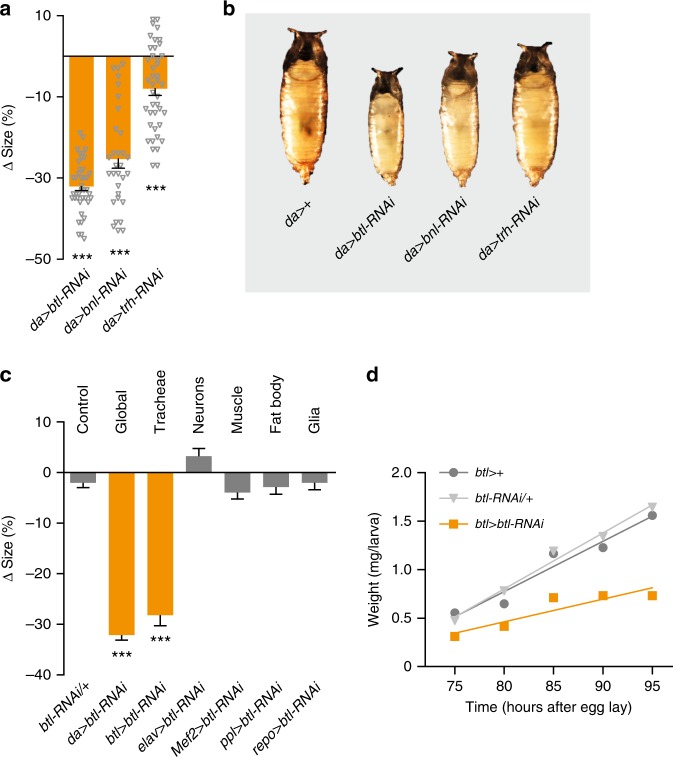Fig. 2.
Tracheal loss of breathless reduces systemic growth and body size. a, b Quantification of pupal sizes and representative images (b) of animals with ubiquitous knockdown of breathless (btl)-pathway components compared with the controls (da > +; da > crossed to wild type, w1118). Values are percent change in pupal size vs. control. a: n = 31–64. c Knockdown of btl in whole animals (da > btl-RNAi) or tracheae alone (btl>), but not in neurons (elav>), muscle (Mef2>), fat-body tissue (ppl>), or glia (repo>) leads to small animals compared with da > + controls. Shown also is the RNAi control (btl-RNAi/+ ; btl-RNAi crossed to w1118). Values are percent change in pupal size vs. the btl > + controls (btl > crossed to w1118). n = 33–86. d Trachea-specific knockdown of btl reduces larval growth rates compared with driver (btl > + ) and RNAi controls (btl-RNAi/+ ). Statistics: one-way ANOVA with Dunnett’s multiple-comparisons test. ***P < 0.001, compared with the control. Error bars indicate SEM. Underlying data are provided in the Source Data file

